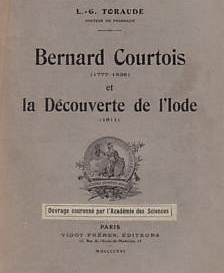Thyroid nodule historical perspective
|
Thyroid nodule Microchapters |
|
Diagnosis |
|---|
|
Treatment |
|
Case Studies |
|
Thyroid nodule historical perspective On the Web |
|
American Roentgen Ray Society Images of Thyroid nodule historical perspective |
|
Risk calculators and risk factors for Thyroid nodule historical perspective |
Editor-In-Chief: C. Michael Gibson, M.S., M.D. [1]; Associate Editor(s)-in-Chief: Mahshid Mir, M.D. [2]
Overview
In 1500, a renowned artist named Leonardo da Vinci was the first who recognized and drew the thyroid gland. In 1834, Robert Graves was the first who described a syndrome of palpitation, goiter, and exophthalmos. In 1857, Maurice Schiff was the first to perform successful total thyroidectomies in animals. In 1895, Adolf Magnus Levy was the first to describe the influence of the thyroid gland and thyroid hormones on the basal metabolic rate. In 1947, Cope, Rawson, and McArthur were the first who described the usage of radioactive iodine for demonstration of a "hot" thyroid nodule. In 1948, T. Templa, J. Aleksandrowicz, and M. Till were the first who described the usage of fine needle thyroid biopsy as a diagnostic method for thyroid nodules.
Historical perspective
|
The main events associated with thyroid recognition and development are summarized here:[1]
|
 Courtesy to Wikipedia |

|
Landmark events in the development of treatment strategies
The main events associated with development of treatment strategies include:[1]
- In 2700 BC, seaweed was used for the treatment of goiter.
- In 340, Ko-Hung, a Chinese chemist recommended seaweed for treatment of goiter among people living in mountains.
- In 650, Sun Ssu-Mo, another Chinese physician, used dried, powdered mollusca shells and chopped thyroid gland for the treatment of goiter.
- In 1200, Arnaldus de Villanova reported that marine sponges could be used to treat goiters.
- In 1475, Wang Hei, a Chinese physician recommended treat of goiter with minced thyroid gland.
- In 1857, Maurice Schiff was the first to perform successful total thyroidectomies in animals.
- In 1891, G. R. Murray was the first who described the effect of thyroid hormone extract in treating myxedema.
- In 1905, Dr. Robert Abbe was the first who treated Graves disease by implanting radium into the patient's goiter.
- In 1914, E. C. Kendall was the first to isolate thyroxine.
- In 1917, M. Seymour in Boston was the first who described the use of X ray for treating Graves disease.
- In 1924, H. S. Plummer at the Mayo clinic was the first who described the pre-operative usage of iodine for Graves disease treatment.
- In 1928, Harington and Barger were the first who described the chemical structure of thyroxine and synthesize it.
- In 1946, A. Astwood was the first who used thiourea and thiouracil for medical treatment of Graves disease.
- In 1949, Jones, Kornfeld, McLaughlin, and Anderson were the first to synthesize methimazole.
- In 1831, iodine prophylaxis was proposed as a government-administered public health program, for goiter prevention.
- In 1998, United States scientists were the first that approved clinical usage of recombinant human TSH.